If your car tires need a little air, you can always pull into the gas station to use the machine. However, you may not know how to use a gas station air pump or you might be confused about how to properly inflate your tires.
In this guide, we walk through all of the steps with you, so you can pump up the car tires properly. Additionally, we show you some hidden benefits of using the gas station air. We also review the benefits of maintaining proper tire air pressures.
How to Use a Gas Station Air PumpTo use a gas station air pump, you need to find the air compressor and park near it. Once you remove the air nozzle, you can pay for the air and adjust the settings. Remove the tire valve cap and inflate the tires. Check the pressures when you are done and return the hose to its original place.
Here are more detailed steps on how to use the gas station air pump:
1.Unless you have used the air pressure machines before, you might not know where to find them or understand what they look like. Normally, the air machines aren’t right with the gas pumps, but off to the side somewhere.
There will be a sign on the machine that indicates its purpose. You might even see something, such as “Free Air.”
2. Park Near the CompressorAfter you locate the air pump, you need to park as close as possible to it. The hose should be able to easily reach the tire or tires that need to be filled up.
If you park and realize you are too far away, just inch it a little closer. You can leave the car engine running to make it easier.
3. Remove Air NozzleInspect the air hose to make sure it is in decent condition. If it isn’t, you might want to choose a different machine to use.
Once you’ve approved the hose, you want to move it to where the tire is, especially if you are paying for it.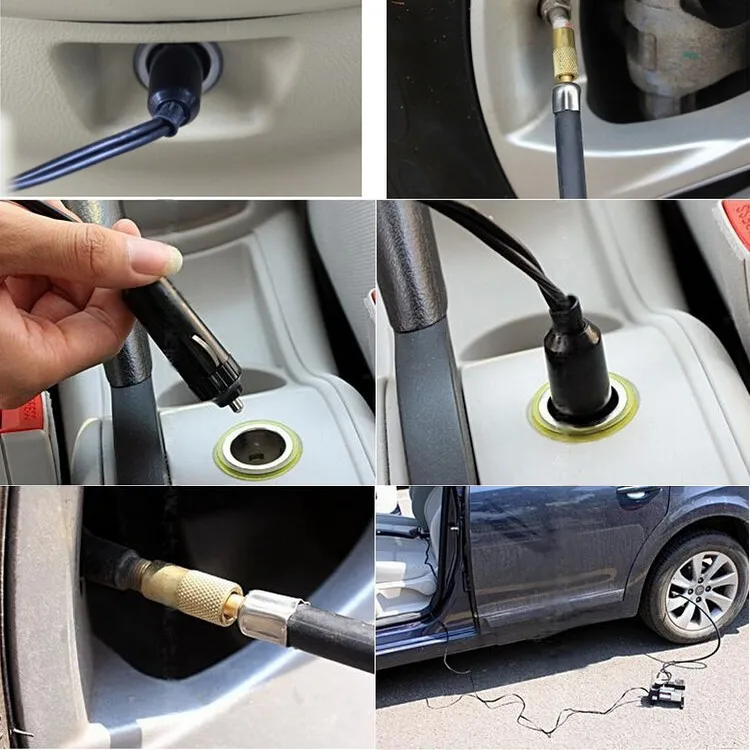 You want to be ready to fill up those tires when it goes on.
You want to be ready to fill up those tires when it goes on.
Some machines are free and you won’t have to pay anything. Other times, you will be required to enter some quarters or use your credit card to get it started.
If you don’t have quarters, you might be able to get some change from the gas station. Once the money is inserted, the air will turn on for a specified amount of time.
5. Set Appropriate PSI MarkSome machines offer settings for the PSI. You can find this number on the card mounted on the inside of the driver’s side door jamb.
This measurement shows what the tires should be inflated to. Adjust the settings to match this number. If the machine doesn’t offer this, you will need to keep a close eye on how much air is being put in the tire.
RELATED: How to Find the Correct Tire Pressure For Your Car (4 Steps)
6. Remove Tire Valve CapOnce the air hose is running, you want to remove the cap on your tire valve.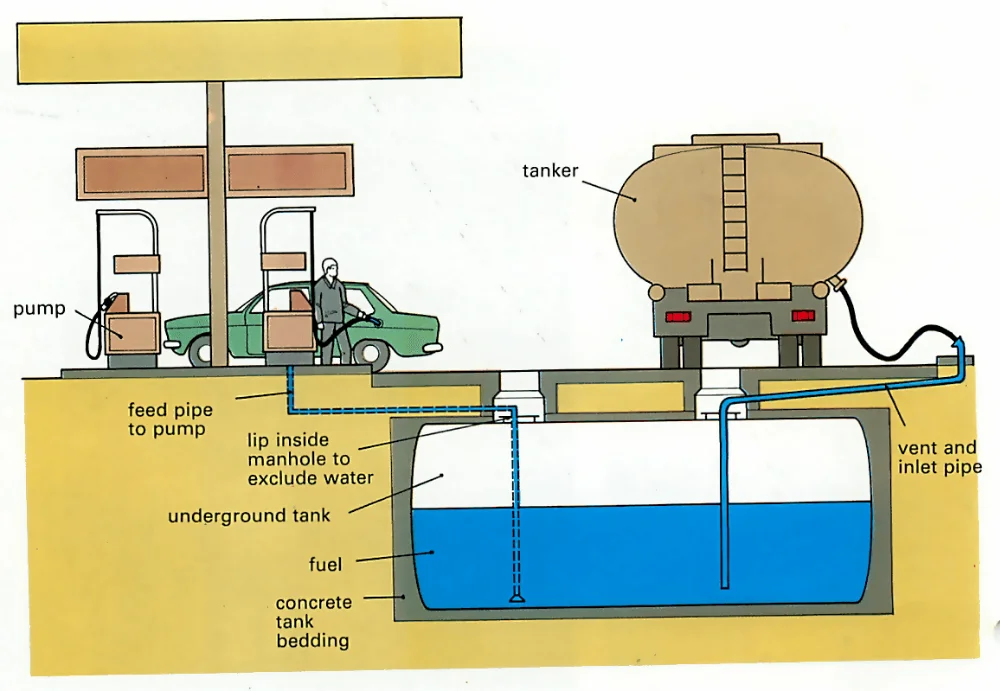 Don’t misplace this tire cap or the air could leak out while you drive.
Don’t misplace this tire cap or the air could leak out while you drive.
However, if you ever lose a cap or one gets broken, they aren’t expensive to replace. You can find them at most auto parts stores.
7. Inflate TirePush the end of the nozzle onto the valve stem of the tire. You will need to apply some pressure to make the fit secure.
Once you have them connected, air will flow into the tire. Once you have reached the target PSI, you remove the hose nozzle from the tire valve. If the air pump has an integrated pressure gauge, you can do both these steps at the same time and inflate, release and check the pressure.
8. Check PressuresYou should always double-check the air pressure to ensure it is right. If the tires are still low, go ahead and put more air into them.
If you have overfilled the tires, you will need to push gently on the valve stem to remove some air. Either way, it should fall right in line with what’s on the door jamb.
After the tires have been pumped up, you are ready to put the equipment back. Put everything in its place where it belongs, not necessarily where you found it.
It might be tempting to throw the hose on the ground, but this only ruins it for the next person. Just think about how you would feel if you needed air in a tire and the hose was destroyed because of negligence.
RELATED: How to Reset Tire Pressure Light (TPMS) – By Car Model
Benefits of Using Gas Station Air PumpThere are many reasons to consider using the gas station air pump when your vehicle tires require pumping up. For starters, you might be able to find a free air pump, meaning you won’t have to spend anything. In fact, several states require that the air pumps are free to use.
Additionally, the gas station air pump is going to be available 24 hours a day. If you are driving home after a late night, you can still ensure that your tires are properly inflated. The gas station air pump is also quick, so you won’t be spending a lot of time waiting around.
The gas station air pump is also quick, so you won’t be spending a lot of time waiting around.
When emergencies happen, it isn’t always convenient to drive all the way home. Plus, it might not be safe if the tires are getting low. Instead, swing in the gas station and pump them up so you don’t have to wait in line at the nearest tire center.
Why Maintain Proper Tire Pressure1. Increased Fuel EfficiencyWhen the tires become underinflated, gas mileage gets thrown out the window. As friction increases on the road surface, you pay more to operate your vehicle.
While you might only lose a few miles per gallon, every penny counts. This is especially true when gas prices are on the rise.
RELATED: Is It Dangerous to Drive with Low Tire Pressure? (& What to Do)
2. Increased SafetyTires with excessive amounts of air inside can blow out on the road. The sudden loss of air can lead to an accident and injury.
Plus, the underinflated tire is just as dangerous. If it goes flat unexpectedly, you could be in a lot of trouble.
3. Better Handling/GripWhen the car tires are underinflated, they are more susceptible to hydroplaning. It’s easy to lose control of the vehicle when this happens.
Additionally, with the right tire pressures, you gain more traction. This added grip allows you to brake better, accelerate easier and navigate varying terrains.
4. Longer Tire LifeUnderinflated tires are going to wear out much faster than those at appropriate levels. If you want to put tires on the car less frequently, it’s important to keep them running with the right pressures.
You should check the tire pressures every month, at a minimum. Aside from this, you should double-check the pressure when the temperature drops or rises significantly. For every 10 degree change, the PSI can change by 1. Based on this, any sudden change could dramatically affect the pressure inside the tire and could put you in danger if you aren’t careful.
To check your tire pressure, and add air as needed, you will need to know how to use an air compressor at a gas station. Ideally, you may have some means of inflating your tires and adding air in your car at all times, but if you don’t have your own air compressor or pump with you, most (if not all) gas stations will have an air compressor you can use.
Most stations will let you use their inflator for a small fee, or even for free – but in almost all cases, you will have to air up your tires yourself. Here’s a handy guide on the right way to air up your tires, using one of those types of air compressors.
The best way to make sure that your tires are at their ideal pressure is to check them before you take your vehicle out. Sometimes, though, life gets in the way, and the only reminder you get about your tires is when that tire pressure sensor light on your dashboard turns on.
A tire pressure indicator turning on in the middle of a drive is not the worst of emergencies – there are far worse ways for your dashboard to light up, and you can be thankful that it’s not the oil light or the check engine light. But in any case, it’s still a good idea to stop at a convenient place and check it out.
Tires can get underinflated when they get cold, since cold air shrinks and lead to a dip in tire pressure. Sometimes they get underinflated enough that your tire pressure indicator gets tripped off.
In that case, check your tires to see if they look good. If there seems to be no leaks or any similar problems, you can try driving for a few minutes to let your tires warm up. If the tire pressure indicator does not turn off, then your tire may need to be brought up to the correct pressure by adding a bit of air.
If the tire pressure indicator does not turn off, then your tire may need to be brought up to the correct pressure by adding a bit of air.
Park your car in such a way that you can easily reach all your tires using the hose from the air pump. That means parking your car close to the pump in such a way that the front wheels and rear wheels are both accessible from the pump, while also leaving you enough room to walk in between the pump and your vehicle.
Your vehicle has a recommended tire pressure that takes into account the weight needed to safely carry your vehicle’s frame, even under maximum load. You will usually find these recommendations printed in the door frame when you open your car door, in a trim tag inside the door jamb.
You may also see them in the glove compartment cover, or in the fuel lid. In any case, you will also find these figures listed in the car owner’s manual, too.
Check the recommended tire pressure, and take note if your front tires need to be at a different pressure compared to your rear tires. Take note, also, that the recommended tire pressure for your vehicle is not the same as the figure printed on the tires themselves. The numbers printed on the tires indicate the maximum tire pressure they can take, which is more than what you want for driving.
Ideally, you are checking your tire pressures after you have driven your car around for some time – maybe two to three hours, to give the tires enough time to warm up to their regular pressure. A warmed-up tire that has spent a few hours on the road will usually read 2 to 3 PSI higher than a “cold” tire that’s been in the garage.
You will need a tire pressure gauge, and you may already have a pencil type one where the plastic insert shoots out to indicate the tire pressure. A dial gauge (or a digital tire gauge) will give you a more accurate reading, and these upgrades will not cost you all that much.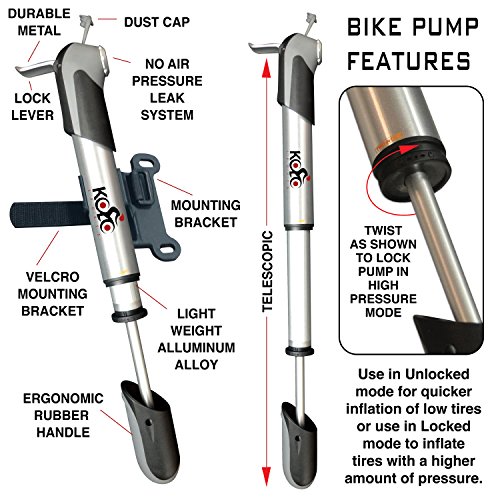
To measure the tire pressure with a tire gauge, first you will need to unscrew the valve stem cap on your tire. Keep those in your pocket so you do not lose them. Then press the end of the tire gauge to the tire valve stem to make your reading.
If you can hear the air leaking out, then you may not be pressing on to the gauge hard enough – push the tire gauge into the valve stem until you can hear the hissing stop.
Then read off the indicator of your tire gauge, which will be in PSI, or pounds per square inch. Remember the recommended tire pressure you read off of your car door jamb or owner’s manual earlier?
Check your readings to compare, and take note of which of your tires are underinflated. If your tire is not underinflated, then screw back the tire valve cap and move on to the next tire.
If a tire is underinflated, then keep the valve stem cap in your pocket. This helps keep you from losing them and also helps you keep track of how many tires you will need to re-inflate at the pump.
Add money into the gas station pump and push the button for air (if equipped) when you’re ready to add air, and do it only after you have a good idea of which tires need to be reinflated, and by how much.
Press the air hose into the valve stem of each tire, and slowly add air. Again, if you can hear a lot of air leaking out, then you may not be pressing the pump hose to the valve hard enough (or the air pump hose may have a leak). Press the air hose into the tire valve harder until you have a good seal and the hissing stops.
Be careful not to overfill your tires with too much air. If you do overfill your tire, you will have to bleed some of the air out. To do so, you need to find the thin metal pin at the center of the valve. You will have to press on to this valve with a small thin tool, like a screwdriver.
Some tire gauges will also let you bleed air from a tire valve, as well. If your tire gauge does not come with a tool to press on to a tire valve pin, then you can use the tip of your car key or a similar object in a pinch.
While bleeding an overinflated tire, press down on the metal pin until you can feel the air shooting out of the valve. Once you feel that you have bled out enough air, lift the screwdriver or tire gauge off of the metal pin to let the valve close once again.
You may check using the pump gauge if your tire is at the correct pressure, but many gas station pumps may have gauges that are damaged or poorly calibrated. It’s often a good idea to verify your reading using your own gauge, to make sure that you have inflated your tire with just the right amount of air.
After adding air to each tire and ensuring that you have the right pressure, put back the tire valve caps, so you don’t forget! Screw the cap on firmly.
Put back the air pump hose so it’s out of the way, and so that it’s ready for the next person who needs to use it.
Hopefully, you have your air tire pressures sorted out and at their recommended PSI ratings.
Keep an eye out on your tire pressure sensor for a while. If it turns on again while you are driving, then one of your tires may have developed a leak – you may have a sharp object embedded in one of your tires, and they may need to be patched.
If it turns on again while you are driving, then one of your tires may have developed a leak – you may have a sharp object embedded in one of your tires, and they may need to be patched.
All pressure gauges built into the compressors show incorrect values! And the reason is not only the inaccuracy of the instruments.
The examination of compressors with digital pressure gauges did not involve big "discoveries". However, at the very first measurements, an interesting thing turned out: the reference pressure gauge showed that the pressure in the inflated tire was not at all the same as that set for the compressor. They took another compressor - the tire again turned out to be under-inflated. And so it was repeated with all the devices. Why? nine0003
Related materials
10 pumps: Compressor expertiseTire pressure monitoring systems - how they workTire pressure: your norm
First thought: regular pressure gauges lie.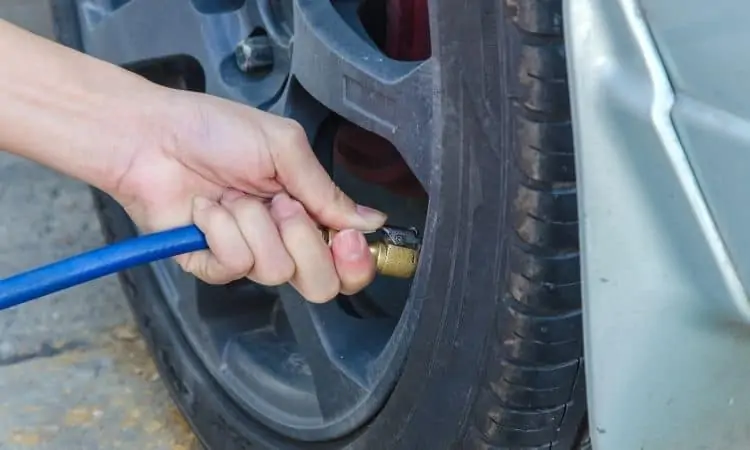 To check them, a splitter was connected to the compressor hose. One of its sleeves was connected to a standard pressure gauge, and the other to the inflated wheel.
To check them, a splitter was connected to the compressor hose. One of its sleeves was connected to a standard pressure gauge, and the other to the inflated wheel.
Related materials
How to inflate a tire without a pump? 5 myths and 2 risky ways nine0003
Indeed, they all lied, but at the same time, the pressure in the inflated tire still did not correspond to the required one. An exemplary pressure gauge connected to a running compressor showed 2.0 bar, but as soon as the electric motor died, the pressure decreased to 1.8 bar. The same exemplary pressure gauge showed when connected directly to the wheel valve. How to explain this fact?
The fact is that approximately 0.2 bar is lost when overcoming a narrow bottle neck - channels in the spool. As soon as the compressor turns off and the air flow becomes equal to zero, the pressure in the entire system immediately equalizes - then the error of the compressor pressure gauge can be estimated. nine0003
nine0003
Related materials
Pump up or inflate? Non-Standard Compressor Test
Understanding came when they guessed to connect a valve turned out of the wheel to a running compressor. It would seem that the pressure gauge should show zero: after all, there is no back pressure. However, the very first experience showed an excess of 0.4 bar! Having gone through several valves from different manufacturers, we determined the range of "overestimations" - from 0.4 to 0.6 bar.
The variation in readings depends on how much the valve stem moves when the compressor hose nozzle presses on it . Just don’t think that we didn’t fit or screw the pump tip onto the valve tightly enough. If the tip does not press the spool pin at all, then the valve will open at a pressure of at least 5 bar. And such an ordinary automobile compressor develops with great difficulty.
Scheme of installation for checking pressure gauges of compressors
1 - wheel, 2 - valve, 3 - exemplary pressure gauge, 4 - tested compressor with built-in pressure gauge. nine0040
nine0040
This "error" is easiest to catch when you inflate a completely flat tire. The pressure gauge in the first second of compressor operation will show a pressure of at least 0.4 bar. This is the backwater formed by very narrow sections for the passage of air in the spool. And its value is maximum on a flat tire. Why does it decrease as the tire pressure increases?
Related materials
Small-sized tire compressors: expertise of the magazine "Behind the wheel" nine0003
At the beginning of pumping, the flow is maximum, the speed is high and the resistance (it is proportional to the square of the speed) is greater. As the tire is inflated, it becomes harder for the compressor to pump, the air consumption drops, and with it, the resistance on the spool decreases. Therefore, at high pressures, compressor pressure gauges show tire pressure more and more accurately. And at the maximum pressure that the pump can develop, the flow rate, and with it the back pressure, tends to zero. And the measurement error disappears. nine0003
And the measurement error disappears. nine0003
The connecting element, slipped or screwed onto the valve, also plays a role in the resistance of the air supply line from the compressor to the tire. The largest air passage is provided by tap type tips, and the greatest resistance - up to 0.15 bar - is provided by tips with a narrow gap. But it is especially important that the tip fully presses the spool valve. Because if it does not fully open, the resistance of the spool will become even greater. The correct connection of the tip to the valve is important here. It is necessary to ensure the tightest possible putting on (or screwing) of the tip. nine0003
Compressor tips are available in different designs. The larger the cross section, the better for the passage of air.
Compressor tips are available in different designs. The larger the cross section, the better for the passage of air.
It remains to recognize the obvious: it is impossible to accurately set the pressure using compressor pressure gauges .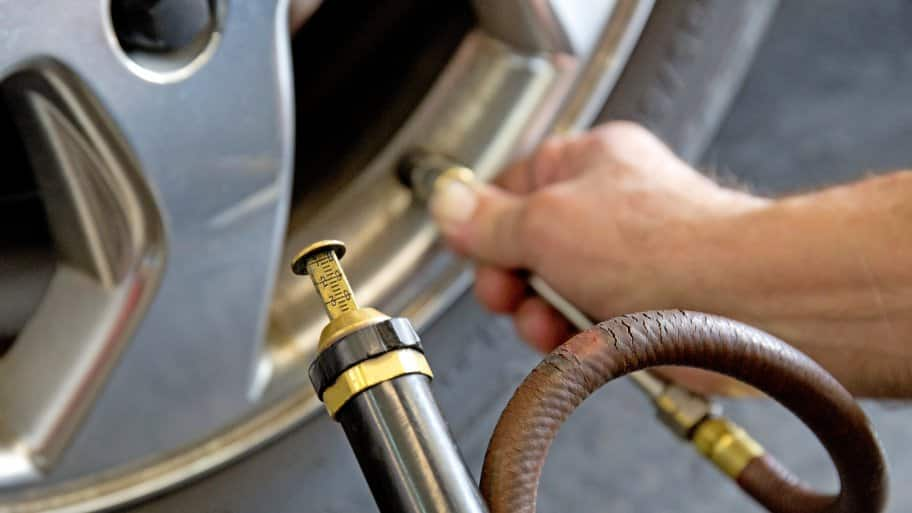 After all, any valve is an obstacle to the air flow. And any obstacle creates the same counterpressure. For this reason, in all compressors, the generated pressure always exceeds that which we later measure directly on the wheel. Therefore, even the most accurate built-in device will always show a pressure higher than in the tire. And accordingly, the compressor will turn off earlier than necessary. nine0003
After all, any valve is an obstacle to the air flow. And any obstacle creates the same counterpressure. For this reason, in all compressors, the generated pressure always exceeds that which we later measure directly on the wheel. Therefore, even the most accurate built-in device will always show a pressure higher than in the tire. And accordingly, the compressor will turn off earlier than necessary. nine0003
It is better to inflate the wheel with a margin, measure the pressure with an accurate pressure gauge and bring it back to normal by bleeding excess air from the tire.
Related materials
Choosing a tire pressure gauge - cheaper and more accurate
You can set the pressure with some advance. If you need to get 2.0 bar, you should inflate the wheel to 2.2 bar. However, different valves create different back pressure, the value of which is not known in advance. And even in one car, she can walk from wheel to wheel.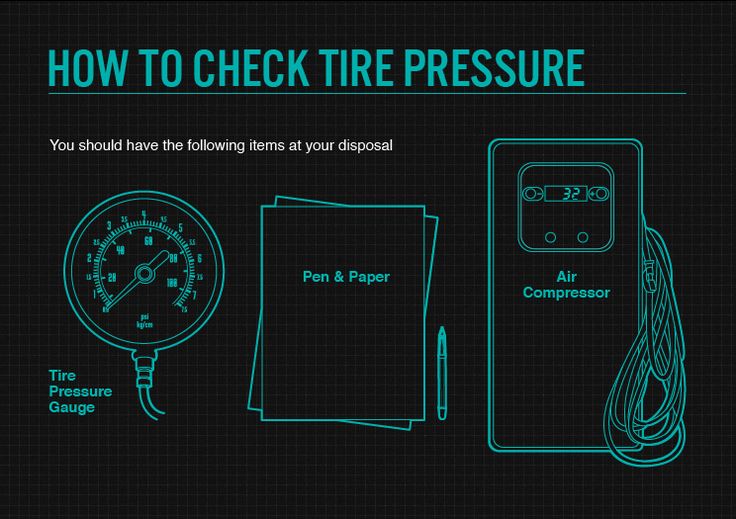 We encountered this phenomenon in the examination of electronic pressure gauges (we will publish it in the September issue of the journal). By the way, in most cases their accuracy is higher than that of devices built into compressors. Therefore, we advise everyone to get such a pressure gauge in addition to the compressor. nine0003
We encountered this phenomenon in the examination of electronic pressure gauges (we will publish it in the September issue of the journal). By the way, in most cases their accuracy is higher than that of devices built into compressors. Therefore, we advise everyone to get such a pressure gauge in addition to the compressor. nine0003
As a result of , the surest way is to inflate the wheel to a known higher pressure, with an excess of 0.2–0.3 bar, and then measure the actual pressure with a pressure gauge, bleeding air from the tire if necessary .
OUR REFERENCE
Spool design
2 - seal; 3 - threaded bushing; 4 - spool rod; 5 - valve body; 6 — valve body; 7 - conical spring; 8 - valve cup. The spools of the old (a) and new (b) samples are completely interchangeable. The air resistance is about the same. nine0040
If you looked into the wheel valve hole, you probably saw a spool there. This device, standardized throughout the world, is used not only in the wheels of cars, motorcycles and bicycles, but also in air conditioners, scuba gear and other elements of pneumatic equipment.
It is the Schrader valve that creates the main resistance to the air flow. Due to its influence, no pressure gauge will show the correct pressure while the compressor is inflating the wheel.
One of the latest trends in our automotive services market is the use of nitrogen in tires. Fans of this method assure a significant reduction in fuel consumption. It is also believed that the wheels practically do not go down due to the larger size of the gas molecule compared to air. Many tire fitting stations and service centers offer refueling of tires with this gas. nine0003
There are also opponents of the method who completely dismiss all the arguments of the supporters. Their main argument is the well-known fact that air is 78% nitrogen, 21% oxygen and other gases.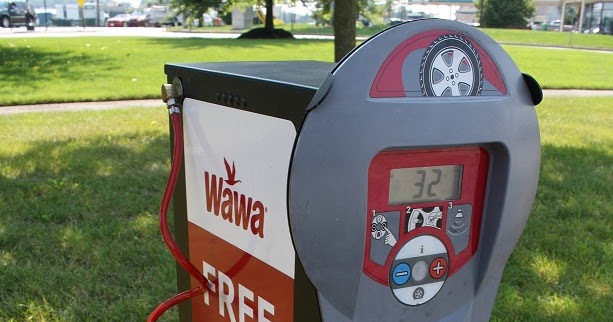 Question: why inject another 15% nitrogen? It is unlikely that an additional volume of gas can dramatically improve the performance of a car tire. Moreover, this service costs more.
Question: why inject another 15% nitrogen? It is unlikely that an additional volume of gas can dramatically improve the performance of a car tire. Moreover, this service costs more.
Let's look into the situation, consider all the pros and cons of nitrogen in tires.
In the automotive world, pumping nitrogen into tires has been around for a long time. True, this method was first used in the "royal" class of racing - Formula 1. However, like most other technologies that have been tested on cars before manufacturers start using them on production cars. In this case, an air-nitrogen mixture was used, and not pure gas. The method was first used in the middle of the last century.
In the case of Formula 1, the use of this method provides at least one big plus - increased safety. The fact is that in the event of a car igniting, the air from the burst tire is an oxygen blower, igniting the flame even more. In the case of nitrogen injection into tires, this effect will no longer be, that is, the risk of fire is reduced.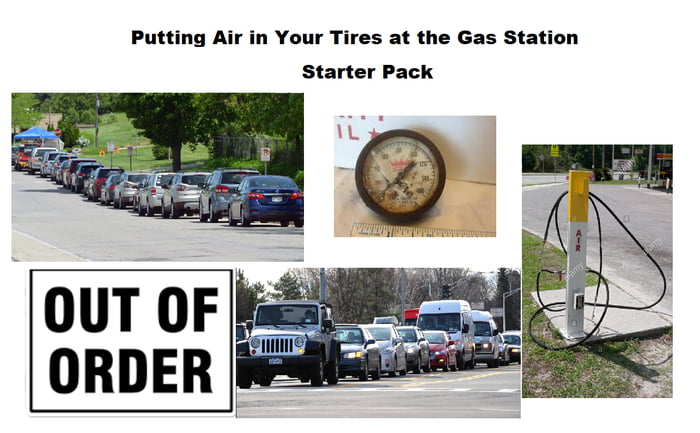 nine0003
nine0003
In the US, nitrogen is used instead of air in tires in commercial vehicles. This is not a mandatory rule, but many truck owners and carriers use alternatives.
In ordinary life, cars are not often used to the limit of their capabilities, fires occur very rarely. Therefore, pumping gas instead of air just for the sake of greater safety is impractical, but there are other advantages.
Inflating tires with nitrogen has both supporters and opponents. Moreover, they are present among professionals, including owners of tire stations and service stations, and among amateurs. The advantages of the method include:
This is one of the most common arguments for nitrogen instead of air. Its essence boils down to the fact that the specified gas is lighter than air, respectively, the lower weight of the wheel will lead to a decrease in fuel consumption. nine0003
Its essence boils down to the fact that the specified gas is lighter than air, respectively, the lower weight of the wheel will lead to a decrease in fuel consumption. nine0003
To do this, you need to deal with real numbers. A cubic meter of air, which is pumped into tires, has a weight of 1.29 kg, and a cubic meter of gas - 1.25 kg. A standard passenger car wheel holds about 75 grams of pure gas and 77 grams of air mixture. Therefore, the difference in fully inflated wheels will be a few grams, which is negligible for significant fuel savings.
The difference is almost imperceptible - much more weight on the wheel adds dirt between the treads or pebbles. nine0003
Winter Drive protection
Tires Goodyear UltraGrip Arctic 2 SUV
Winter Drive Protection Sound Comfort
Rating:
4.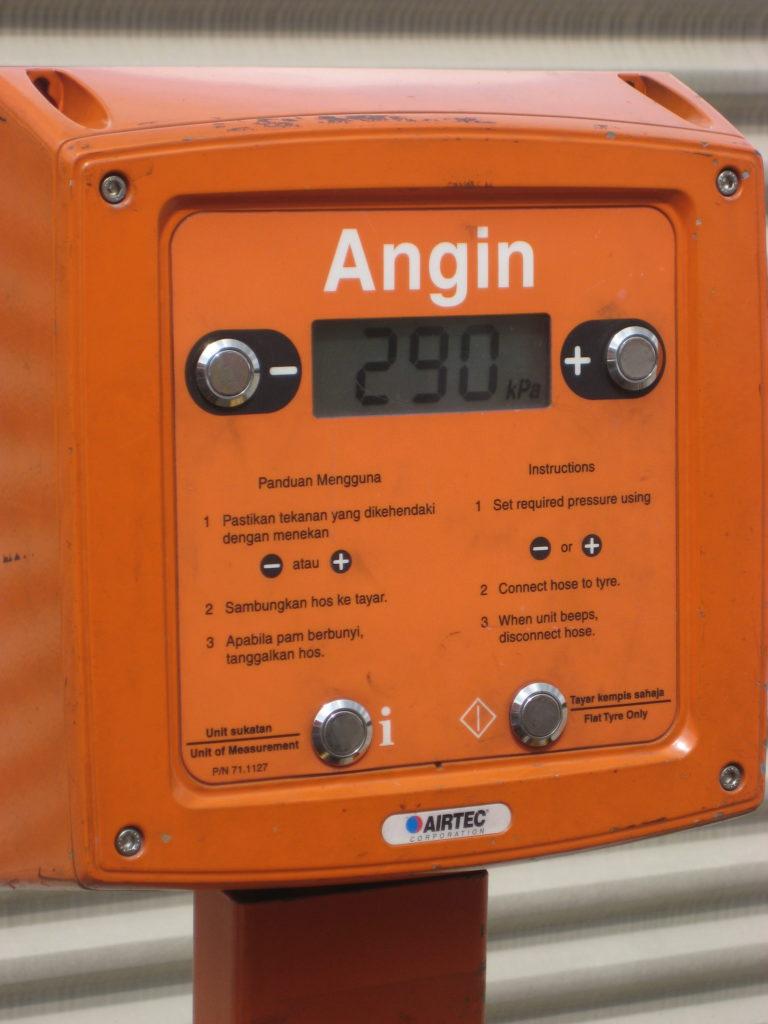 5
5
Tires Goodyear UltraGrip Ice 2
Winter Drive protection
Tires Goodyear UltraGrip Performance+ SUV
Winter Drive protection
Tires Goodyear UltraGrip Arctic 2
Winter Drive Protection Run On Flat Sound Comfort
nine0002 Tires Goodyear UltraGrip Performance+ Stable pressure is another argument for fans to pump nitrogen instead of regular air into the wheel. In this case, the argument is the larger size of the gas molecule compared to the size of the oxygen molecule. Accordingly, oxygen seeps through microscopic cracks and holes in the tire faster. As a result, the pressure drops and the wheel lowers. nine0003
Accordingly, oxygen seeps through microscopic cracks and holes in the tire faster. As a result, the pressure drops and the wheel lowers. nine0003
Yes, it is. But do not forget that ordinary atmospheric air is 78% nitrogen, and only 21% oxygen. Therefore, when the pressure drops in the wheel, it is pumped up, thus adding even more nitrogen from ordinary air. For several years of operation, the wheel is almost completely inflated with gas alone.
Nitrogen practically does not expand when heated, so the pressure in the tire will remain the same as the temperature changes. In contrast to this statement, it is worth noting that more than three-quarters of the air is occupied by nitrogen. Other gases also do not expand much, so the pressure difference in tires filled with air or nitrogen when heated is not too great to take into account. nine0003
Proponents of the method claim that the absence of oxygen provides additional protection for the material from aging.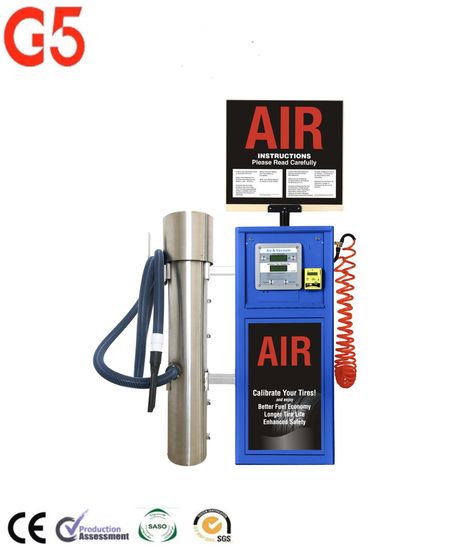 Yes, this is a fair remark, but does it make any practical sense? Rubber is exposed to other factors - aggressive environment, moisture, sunlight, and so on. All this does not contribute to the extension of service life, but no one is going to use tires forever. There are certain operating times that are not significantly affected by the gas used. nine0003
Yes, this is a fair remark, but does it make any practical sense? Rubber is exposed to other factors - aggressive environment, moisture, sunlight, and so on. All this does not contribute to the extension of service life, but no one is going to use tires forever. There are certain operating times that are not significantly affected by the gas used. nine0003
A lower noise level indicates a tire filled with clean gas rather than atmospheric air. Yes, by simple measurements at a speed of 100 km / h, the noise level in the first case is 65 dB versus 68 dB in the second. Is this good or bad? Just imperceptibly - a difference of 3 dB is absolutely negligible.
A wheel filled with nitrogen is less likely to explode. In fact, the wheel will explode only in the case of ruthless operation of the car, which is very rare in ordinary life. Moreover, in fact, the wheel does not explode, but bursts - there is a sharp loss of pressure when the tire structure is destroyed. And this can happen when hitting an object or obstacle. nine0003
nine0003
Also, do not pay serious attention to the advice of those who recommend less checking the tire pressure with nitrogen. Checking should be done as often as the manufacturer recommends, and the number of checks does not depend on the type of mixture. How much the wheel “holds” is largely influenced by the composition of the rubber, its condition. A normal tire without damage is able to hold pressure for years
But metal corrosion is more pronounced when air is used. The oxygen contained in it is an oxidizing agent. It enters into a chemical oxidation reaction even at low temperatures, affecting the wheel and rubber. This statement can be attributed to the really positive aspects of nitrogen injection. nine0003
The downside of using nitrogen instead of air in your car tire can be the price. After all, the technology provides for the removal of air from the wheel and then the injection of clean gas instead. Naturally, you need to think carefully about whether it is necessary to pump in nitrogen, or whether it is better to use the traditional method. We did not find significant advantages, representatives of the main tire brands have a similar opinion. To determine why to do this, you need to think carefully, because there are no pronounced advantages. nine0003
We did not find significant advantages, representatives of the main tire brands have a similar opinion. To determine why to do this, you need to think carefully, because there are no pronounced advantages. nine0003
Another disadvantage is the need to use special equipment, gas cylinders are also needed. This can only be afforded by special service centers for car maintenance, tire shops. Any car owner can inflate a tire with a compressor or even a simple pump, for this it is not necessary to be a professional. With nitrogen, this will not work - in a garage or in the middle of a highway you will not be able to pump gas, at least without the appropriate equipment.
The following shortcoming cannot be called a pure disadvantage of the method, but still its opponents often talk about it. The essence of their refutation boils down to the fact that in simple air the nitrogen content is at least 78%, so it makes no sense to pump in an additional 15%. nine0003
The argument for using nitrogen in tires is the smooth running of the vehicle.